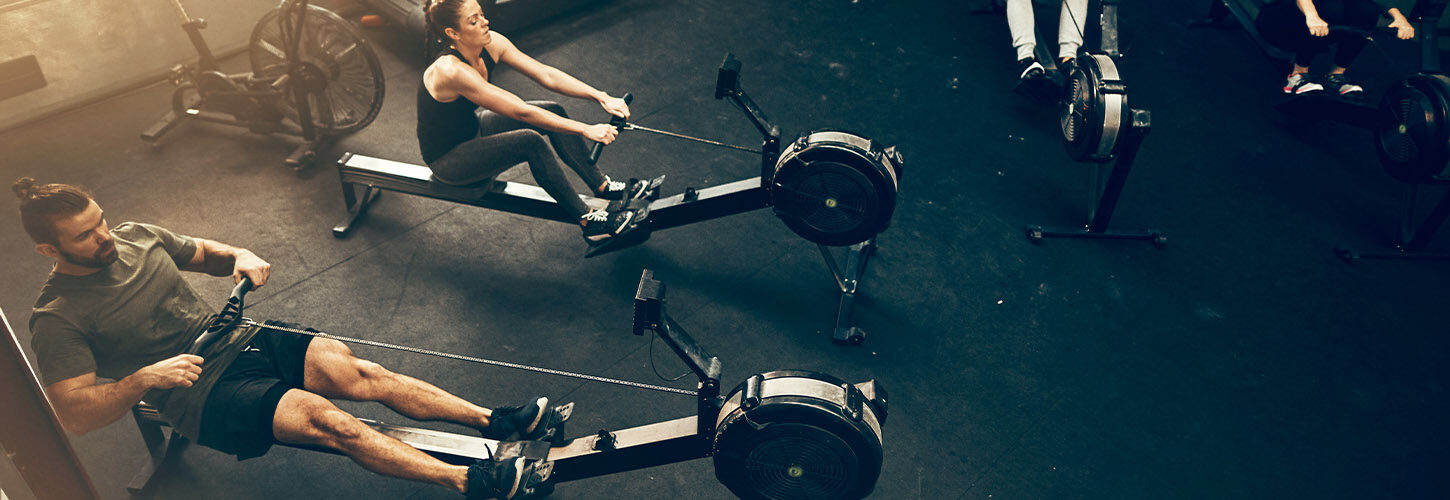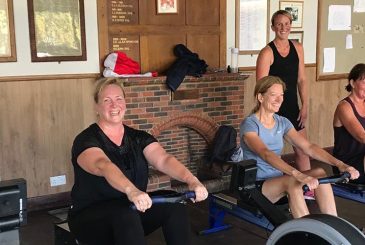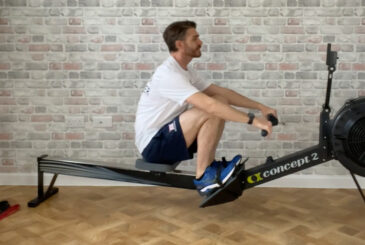Traditional rowing training plans are built towards the end goal of a 2000m race. They combine several training modalities in differing proportions at different times to develop the physiology required to complete the international race distance in the fastest time possible.
A 2000m rowing race takes anywhere between 5 minutes 18 seconds and 10 minutes 13 seconds. Even within that relatively small bandwidth there will be slightly different programme design. This will account for the split of time spent utilising the different energy systems, the speed at which the athlete needs to connect the blade to the water, the number of strokes required to complete the race and the parts of the body used to drive the boat forwards.
Most training programmes will operate in or around a split of 87% aerobic and 13% divided between various aerobic threshold and anaerobic zones in varying proportion based on the time of season. The weightlifting and conditioning focus early in the season will be on building quality muscle mass in key areas to support resilience to the rowing-specific training, including strategies to ensure hip, shoulder and trunk health, then progress though a strength phase and ultimately towards power and speed in the summer racing season.
But what happens if you change that racing distance to 60 minutes? Or even more extreme… 4 hours? Below are some of my quick tips to modify your training, ensuring you can both perform at your best and stay safe competing in longer distance ergo/rowing competitions.
1. Trunk health
Now this is nothing new – building trunk strength and the ability to transfer power from the legs to the handle over and over again whilst protecting your spine and the associated structures is part of any good programme. But in events over 60 minutes, what you are asking of your body changes slightly; the force you are asking you trunk muscles to transfer will be lower, but they will need to transfer it many more times without fatiguing and endangering passive tissues, discs and bones in your back. You will therefore need to build capacity or the ability to complete a movement more times without fatiguing and changing the movement pattern or range.
Try working up to completing at least 15 minutes of continuous and varied trunk work 5 days a week to protect your back and support your performance. An example trunk circuit is below:
Trunk circuit
| Exercise | Reps x Sets |
| Hollow hold weighted chest press | 15 x 3 |
| Jack knife hold with weighted rotation | 15 x 3 |
| Side plank raise (both sides) | 15 x 3 |
| Single arm dumbbell RDL (both sides) | 15 x 3 |
| Straight leg toe touches | 15 x 3 |
2. Strength training
Counter-intuitively, I would recommend you shift your gym work towards more intensity (heavier lifting) and less volume (less reps, sets and sessions) and try to complete the sessions in the lowest training volume parts of your week, so they can remain effective alongside increased time on the rowing machine (aerobic training load). Physiologically, aerobic training soon after weight training blunts the anabolic pathways and will compromise the desired outcomes of the lifting session. Your synergistic (supporting) muscles will also be fatigued after long aerobic sessions and training in the gym soon after can leave you prone to injury, so session placement in quiet periods is key for effectiveness and safety.
Aim to lift 2-3 times weekly using sets and reps in the 3-5 range. Ensuring good intent and quality technique. Rest should be 3 minutes or more between sets.
3. Aerobic volume
The percentage of the competition for which you are going to be operating aerobically is drastically higher than a 2000m race. You are therefore likely be looking at 90-95% of your training programme being in the aerobic zone with some specific speed and strength work built in occasionally.
Aim to complete one longer aerobic session per week, building to around 80% race distance, and complete at least 90% of your race distance 2-3 weeks out from the competition itself. Outside of these longer sessions, try to build in breaks at least every 30 minutes to stretch/mobilise and rehydrate/fuel.
4. Fuelling/hydration
Rowers do not need to refuel or hydrate during 2000m competitions as the body is capable of carrying more than enough of the fuel it requires to complete this distance without replenishment. Taking your hands off the handle is also impossible at racing speeds.
However, when you start to move beyond 90 minutes of continuous aerobic exercise, glycogen stores will start to run low and depending on temperature dehydration will start to affect your performance long before that. Once your glycogen stores are depleted, you’ll shift more towards synthesising fat, and protein, for energy – both of which will compromise your output as the physical processes are far less efficient.
Now this is difficult to tackle in a sport where you use both hands to grip the handle at all times. You’ll need to look at solutions like a camel pack to stay hydrated or another accessible fluid source, as well as pre-packaged carbohydrate sources in bite size portions so you can get them in quickly on the recovery.
For anything over 90 minutes, aim to consume in the region of 60g-90g of carbohydrate per hour. Hydration is more difficult to manage between different people, but get used to measuring your body weight after long endurance sessions to get a feel for how much fluid you need to replace.
5. Environment
The environment you create for this type of event will be key to keeping you motivated and focussed for the drastically increased duration. Think about any audio-visual set ups you may want to help with boredom, do what you can to ensure a comfortable air flow/temperature and consider asking friends or family to take turns being with you to offer support and encouragement.
Here are some of my favourite albums below for getting through the longer days on the handle:
- Knife Party – Abandon Ship
- Jamie T – Kings and Queens
- The Prodigy – Invaders Must Die
- Linkin Park – Re-animation
Most importantly, once you’ve prepared your body for the challenge, get on and enjoy it! Just completing an endurance or ultra-endurance event comes with a unique feel good factor and badge of honour that you just don’t get anywhere else … ‘be extra-ordinary’ as my first (and best!) ever rowing coach used to say.










